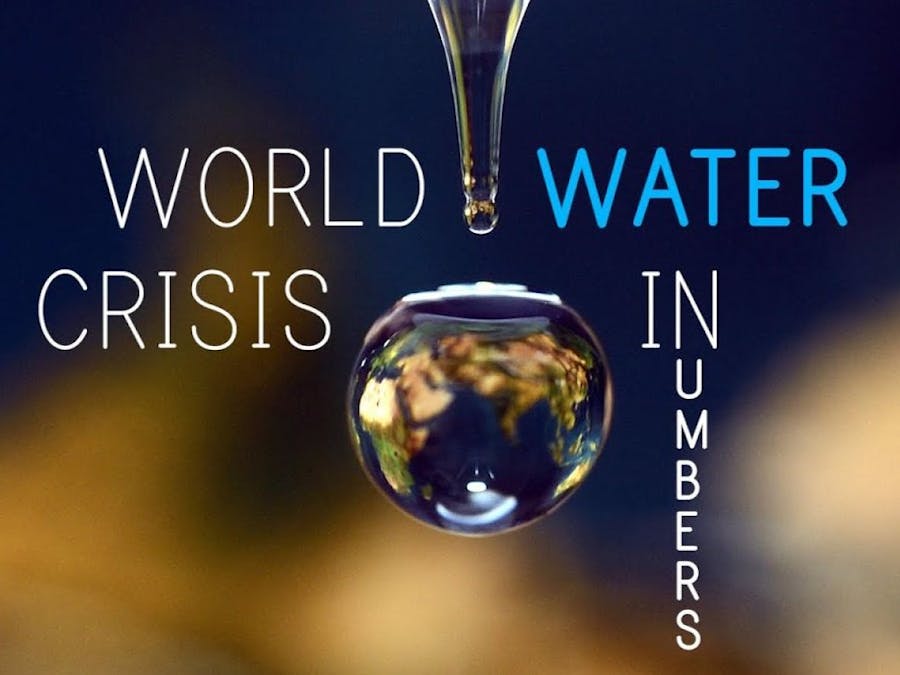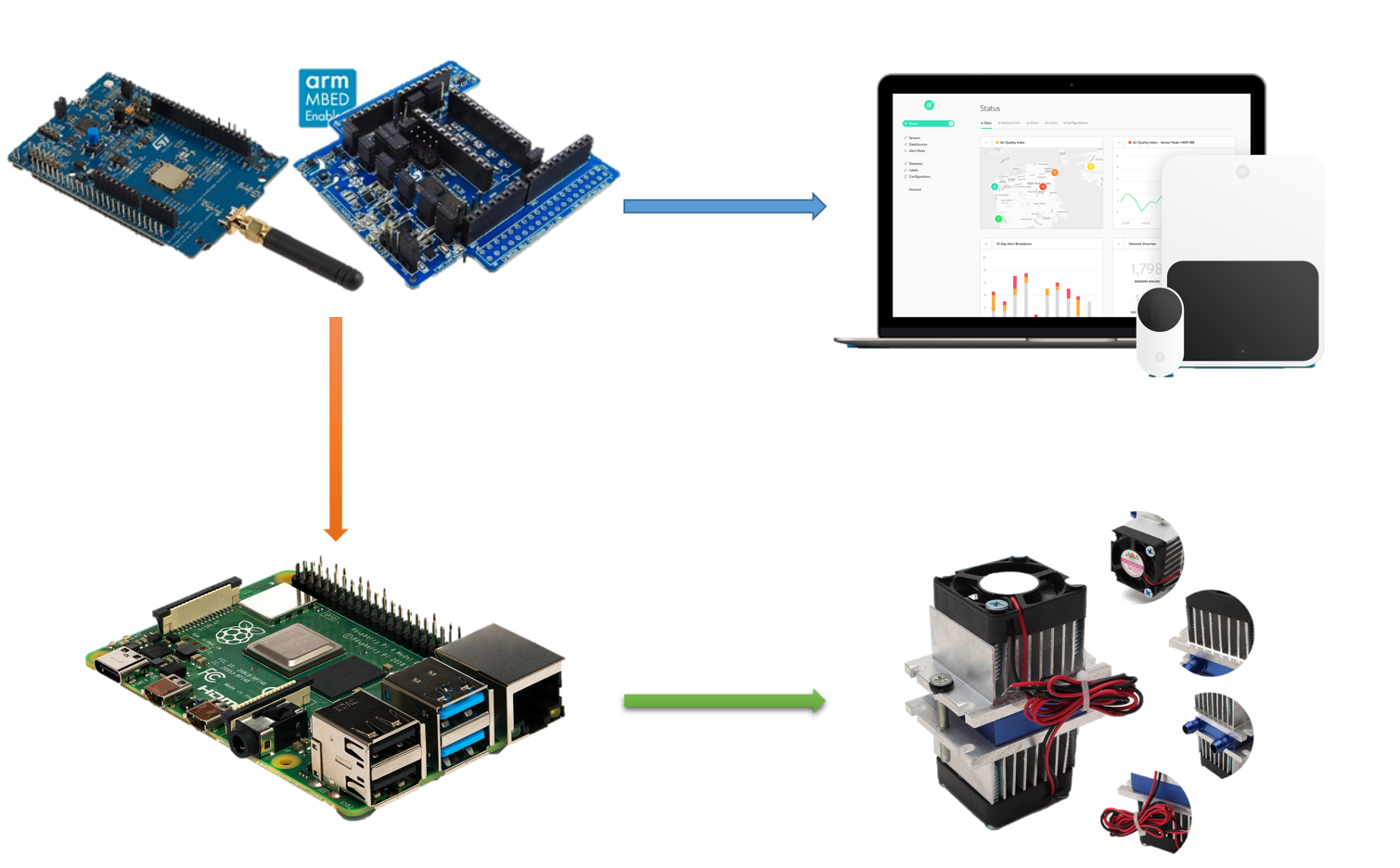As we all know that water scarcity has affected almost every continent and was listed in 2019 by the World Economic Forum as one of the largest global risks in terms of potential impact over the next decade. My eyes were filled with tears when I read that at some places in African and Asian continents children cannot go to school because they have to stand in a long queue along with their parents to fill water for their daily household courses. Even farmers are not able to grow crops in such places. Some places of the world are enjoying clean, healthy water whereas some places have to suffice their needs from water in muddy pools formed by the rain. We donate blood because it can save life, so why are we not donating water which can save our existence. IoT has already paved the way for us but we fail to establish it in real life.
We are all going to pay a heavy price when the water runs out. Why not pay a reasonable cost for its proper management to avoid that situation?
This project demonstrates how to build a device using the Helium Development Kit to solve a global problem. The device uses the onboard sensor data to know the relative humidity, relative temperature and relative pressure to know the amount of water saturation in air. The device will check for the optimum temperature, humidity and pressure so that the ATW ( Air To Water ) machine can be switched on. It is necessary to check when to switch on or off the device so that we can get maximum yield and lower our electricity bill.
There’s approximately 3100 cubic miles or 12,900 cubic kilometres of water in the atmosphere. Water vapor is an unlimited resource constantly replenished by nature’s hydro-logic cycle. Our Device can extract water from air indefinitely without impacting the planet.
The two key ingredients to make water are humidity and temperature. For the best results, it’s important that your machine be located in a well-ventilated area. Ideal operating conditions are a temperature between 21º C to 32º C and relative humidity between 40% to 100%.
On average, a man uses 50 litres of water and the device can make up to 100 litres of water per day.
Moreover, according to the World Health Organization, frequent and thorough hand washing can help reduce your chances of contracting infectious diseases such as COVID-19. But what if you don’t have access to clean water? Worldwide statistics for 2017 revealed that poor sanitation and limited access to hand-washing facilities contributed to around 1.5 million deaths. Nearly 2.2 billion people are currently living without safely managed water outlets, and around 22% of healthcare facilities in the least developed countries lack basic water services. Like COVID-19, water scarcity is a global problem that needs collective action. There is no more urgent a time to address the world's water crisis than now, when people are constantly being reminded to use water to combat the spread of the virus. Let the COVID-19 outbreak remind us all how important safe running water is in keeping us healthy, and spare a thought for those who cannot count on it always flowing. Ensuring that clean water and hygiene is a right guaranteed to all is an urgent demand for global justice, but it is also vital in preparing the world to resist the development of future pandemics.
Technical overview:Water is our basic need and the most important thing on which living organisms life are truly dependent, but due to lack of enough water in some places, people are forced to drink dirty water. So it is important to take the need of water in account. I know how fresh we feel when we get a bottle of chilled and clean water, it can restore us from any pensive mood but due to water pollution and water scarcity all around we are suffering from bad health and undesired effect in our body, so it is important to develop a cheap and low-power consuming device which is not complex, because power-hungry devices needs lots of maintenance and are far beyond the reach of poor farmers or village men. So I decided to use Edge devices capable of using different sensors and features with low latency and almost no carbon footprint. Moreover introducing ML/AI algorithms in our device .
Theme: Nature
1) Content Analysis:
With increasing population a sustainable method of producing water is important. The device would have all environmental sensors which sends data directly to my database where intelligent AI, ML algorithms can be performed to detect for substantial level of water vapor available for condensation within the area making our condenser highly efficient. The device would save energy by leveraging the smart algorithms to decide whether condensation device should operate or not based on sensor data.
2) Technological Analysis:
There are many existing companies which are using Air To Water : water condensation technique to produce water but the real problem is that the device is not energy and data efficient. The device comes with huge deployment size and is just a waste because there is sometimes not correct environmental condition to condense atmospheric water vapor, reducing the efficiency of device and increasing the overall production costs, also if I talk in terms of data, the device should handle extreme environmental conditions so it is not practically possible for the existing device to have cheap network infrastructure to transmit long-range data with low latency and low network saturation levels. These are few drawbacks as I came through while working with some of these companies.The Helium developer kit not only includes environmental sensor board but also gives a very flexible web integration support making it easier to collect, manipulate and visualize data. Moreover the preferred areas where this technology can be established has LoRaWAN connection.
We are replacing the traditional condensing method with the Peltier condensing method.
Advantages of this device over conventional device:
- No moving part, so it will require less frequent maintenance.
- No use of chlorofluorocarbons.
- Temperature control within fractions of degrees can be maintained.
- Flexible shape (form factor); in particular, they can have a very small size. Ideal for modern technology trends.
- Can be used in environments that are smaller or more severe than conventional refrigeration.
- Controllable via changing the input voltage/current very easily.
- Draws comparatively low current than a compressor based refrigeration system.
- It can easily attain the required temperature, it can result in drop down of 4º C in just 6 second.
Previously we just used to play with sensors but now using ML/AI we can not only sense but analyse, predict and take actions.
We will try to get serial reading on our raspberry pi so that we can do Machine Learning and decide when to activate the device and when to switch it off. The important measure taken while making this project was collecting data efficiently and patiently, once the data is collected the job becomes lot more easier (You are bound to fail if you don't collect correct data to feed your hungry ML frameworks). For data collection part I used my past project which just gathers data from the sensors and here I am going to train my device on those data.
Setup Raspberry Pi:
Let's communicate through serial port:
import time
import serial
ser = serial.Serial(
port='/dev/ttyUSB0',
baudrate = 9600,
parity=serial.PARITY_NONE,
stopbits=serial.STOPBITS_ONE,
bytesize=serial.EIGHTBITS,
timeout=1
)
counter=0
while True:
x=ser.readline()
print xFollow the images:
Train the data to take action:
import numpy
from keras.models import Sequential
from keras.layers import Dense
from pandas import read_csv
seed = 9
numpy.random.seed(seed)
filename = 'WTA_data.csv'
dataframe = read_csv(filename)
array = dataframe.values
X = array[:,0:2]
Y = array[:,2]
dataframe.head()
model = Sequential()
model.add(Dense(12,input_dim=11, init='uniform', activation='relu'))
model.add(Dense(8, init='uniform', activation='relu'))
model.add(Dense(1,input_dim=11, init='uniform', activation='sigmoid'))
model.compile(loss='binary_crossentropy', optimizer='adam', metrics=['accuracy'])
model.fit(X, Y, np_epoch=20, batch_size=10)
scores= model.evaluate(X,Y)
print("%s: %.2f%%" % (model.metrics_names[1], scores[1]*100))This model gave me the accuracy of 85%.
Now let's setup the Hardware:








Comments